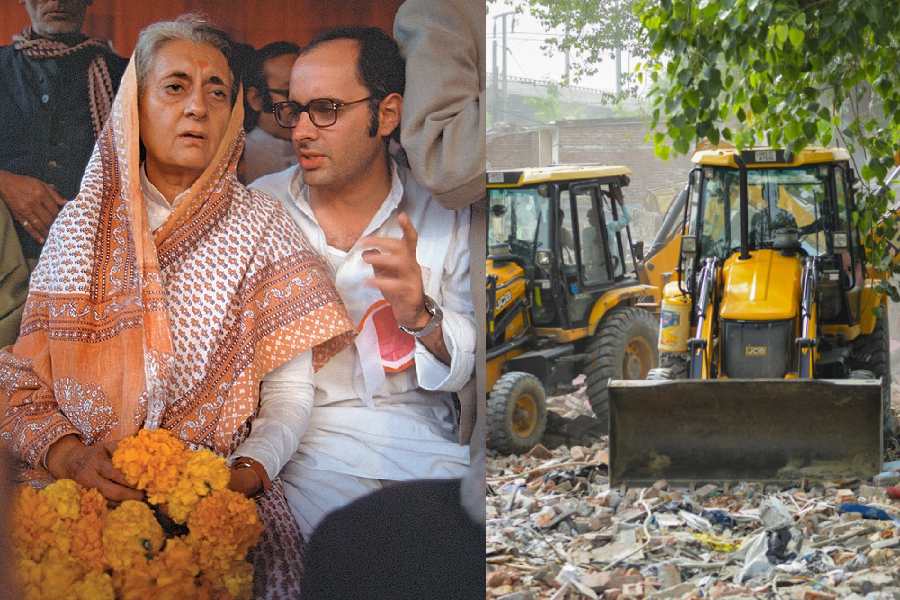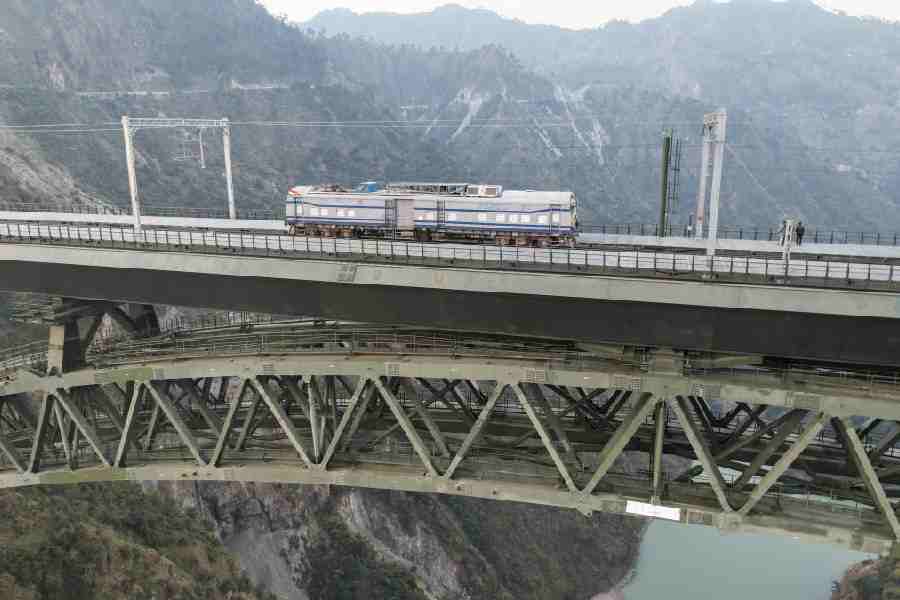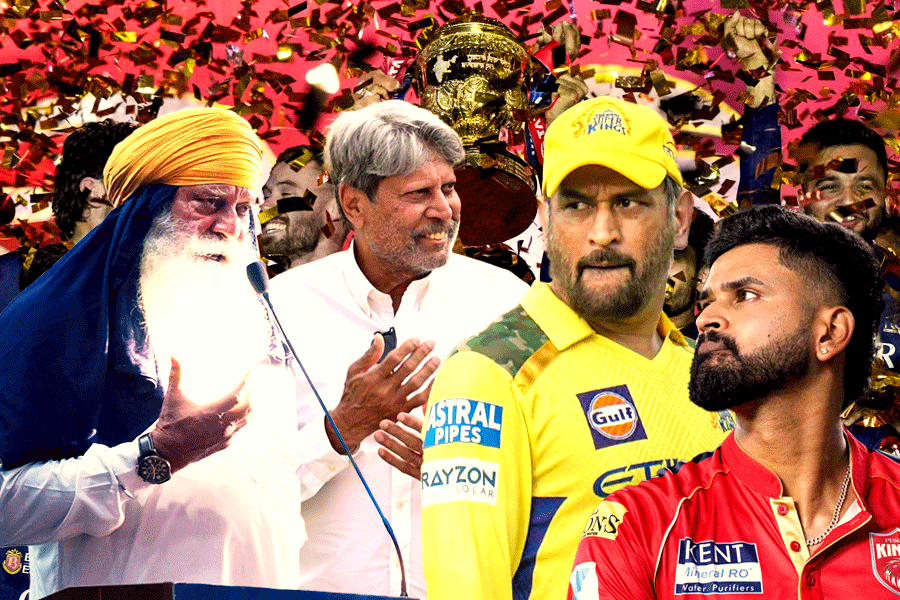 |
| Clay models depicting scenes from Krishna Leela. (Left) Krishna Leela being performed on the occasion of Raas. (Below) Shri Shri Harimandir in Nalbari. Pictures by Biju Boro |
Come autumn and it is time for the annual Raas festival to be celebrated in different parts of the state. In Nalbari, the festival has evolved into a mega religious and cultural event of Assam as well as the Northeast and draws devotees from all parts of India as well as Bhutan and Nepal.
Raas, signifying dancing in delight, is an 11-day festival based on the leelas of Lord Krishna, the symbol of love, beauty and nature. It was celebrated with pomp and grandeur at Shri Shri Harimandir Nalbari recently.
Savouring the celebrations — dancing, singing and merry making — at the carnival-like atmosphere were over five lakh people from far and wide.
“Raas celebrations in Nalbari, otherwise known as the hotspot of insurgency, have seen a tremendous upsurge over the past two years. The town is the centre of all cultural events and most of the prominent artistes in the fields of music, dance or drama hail from this place. All this becomes clear at the time of Raas,” says B. Kalyan Chakravarthy, deputy commissioner, Nalbari.
In a bid to make Nalbari an important destination for pilgrims and tourists, the Nalbari Harimandir committee has drawn up an ambitious project to develop the mandir site.
“We have urged the Union government to declare Raas a tourism festival. This will ensure all-round development of Nalbari,” says Sunil Sarma, member of the festival organising committee.
This would also help generate employment opportunities for the local youth and, in turn, wean them away from the path of insurgency, he said.
The committee has submitted to the Union ministry of cultural affairs and tourism and the ministry of human resources development a project with an estimated cost of Rs 3 crore. The project envisages the setting up of a library, museum, guesthouse, Veda Vidyalaya and a crafts village.
“The objective of the project is to boost the historic Raas festival in Nalbari, which was first celebrated in 1933 as a daylong religious function at the Nalbari Purana Natkhola. Due to its growing popularity, the religious function has gradually turned into a cultural festival,” says Sarma.
The Nalbari Raas festival was celebrated at Purana Natkhola from 1933 to 1945 and was shifted to its present location after the construction of the Nalbari Harimandir in 1946.
Since then, the Nalbari Raas, which later became the Raas Mahotsav, has been celebrated uninterruptedly. A three-day programme till 1949, it is now an 11-day event beginning from the full moon night of autumn. However, the festival was restricted to a day in 1989 when three workers of the committee were killed in a tragic accident, while in 1996, it was celebrated for three days due to the opposition of a militant outfit.
The main Raas puja is done at the permanent puja mandap at the Harimandir complex, which was completed in 1975. The committee has also set up about 100 temporary stalls to install thousands of idols, which depict different incidents from the life of Lord Krishna.
Last year, the Raas celebration committee took special steps for modernising the stalls to attract visitors. The main puja mandap was decorated with 11 pairs of revolving idols of Radha-Krishna. Ten more stalls were mechanised last year.
Sophisticated lighting devices from Calcutta, depicting contemporary events like the terrorist attack on the World Trade Centers of New York, the killing of bandit queen Phoolan Devi and the Orissa floods drew huge crowds.
“After the ceasefire agreement with the Bodo Liberation Tigers, the Bodos thronged the mandap in thousands to witness the district’s largest event. Similarly, the number of visitors from outside the state has also increased once the law and order situation stabilised,” says a member of the organising committee.
This year, the committee erected four huge gates decorated with lights. Apart from the fairs, magic shows and food stalls, an added attraction of the festival was the five mobile theatre groups — Kohinoor, Abahan, Bordoichila, Bhagyadevi and Srimanta Sankardev — which performed plays every evening.
“People from far-flung areas enjoyed the year’s best plays performed by the mobile theatre groups at Nalbari Raas festival,” says Sarma.
This year, two Marathi film and theatre personalities — Dinesh Thakur and Mahesh Kothari — were invited to the Raas festival. The district administration is trying to enlist the help of the cultural department of Maharashtra to develop and showcase this unique tradition of mobile theatres to the rest of the country.
Chakravarthy says, “Nalbari can be called the cultural capital of Assam and the Raas festival provides a platform for the display of the diverse culture of Lower Assam and in fact, the whole of Assam.”
However, Nalbari does not have adequate infrastructure to provide accommodation to all the visitors. “Despite our repeated pleas to the railway authorities for special train arrangements, nothing has come up, so far. However, the Assam State Transport Corporation had provided 15 new buses to ferry the visitors to the remote areas, even to the foothills of Bhutan,” says Sarma.
“Nalbari also has several historical sites like the Bileswar Devalay, Kotora Devalay, Gholi Satra, Jaipal Than, Pandula Satra, Balilesa Kali Mandir and Na Satra, which can also be included in the tourist’s itinerary,” says Sarma.
He said locations along the Bhutan border like Chowki, Uttar Kushi, Suban Kata and Chandrub Jankar could be developed as a tourist sites. Chakravarthy said setting up a cultural complex like the Guwahati’s Srimanta Sankardev Kalakshetra in Nalbari would open up avenues for harnessing the latent talent in the region. “In fact, it can be turned into an important industry if more tourists can be attracted to Nalbari.”











